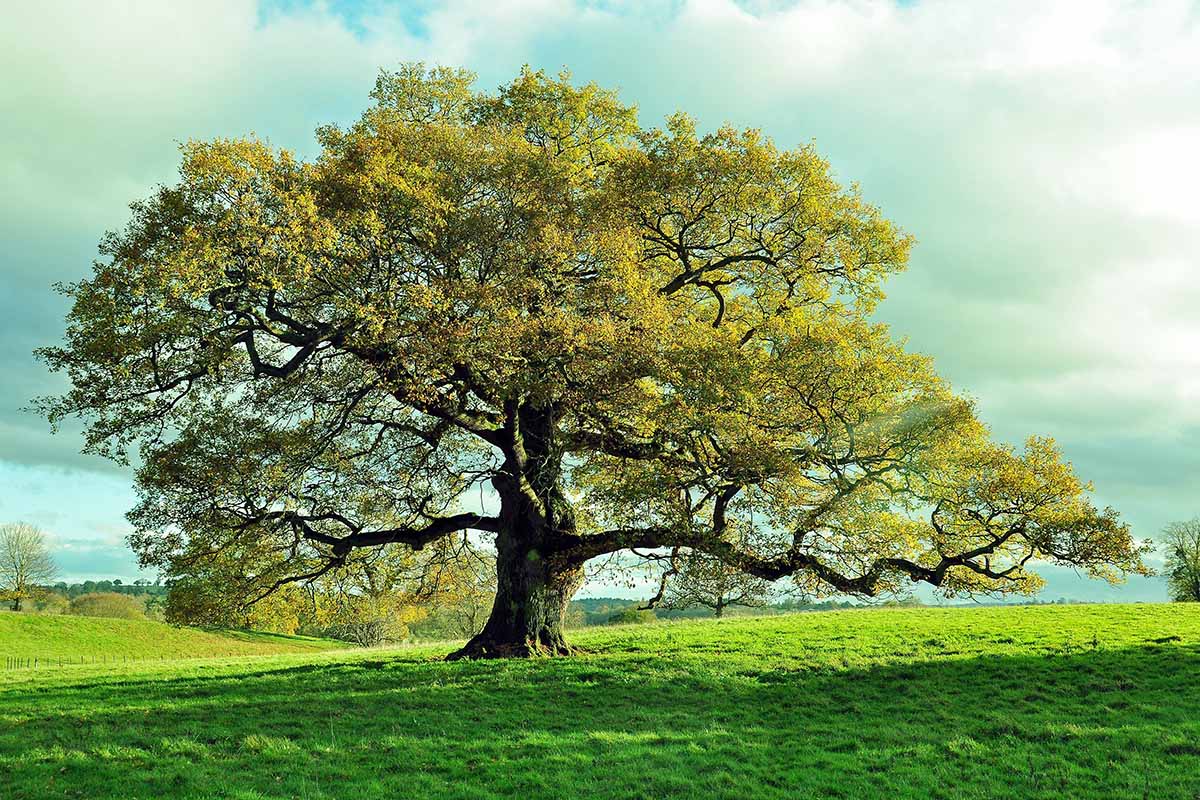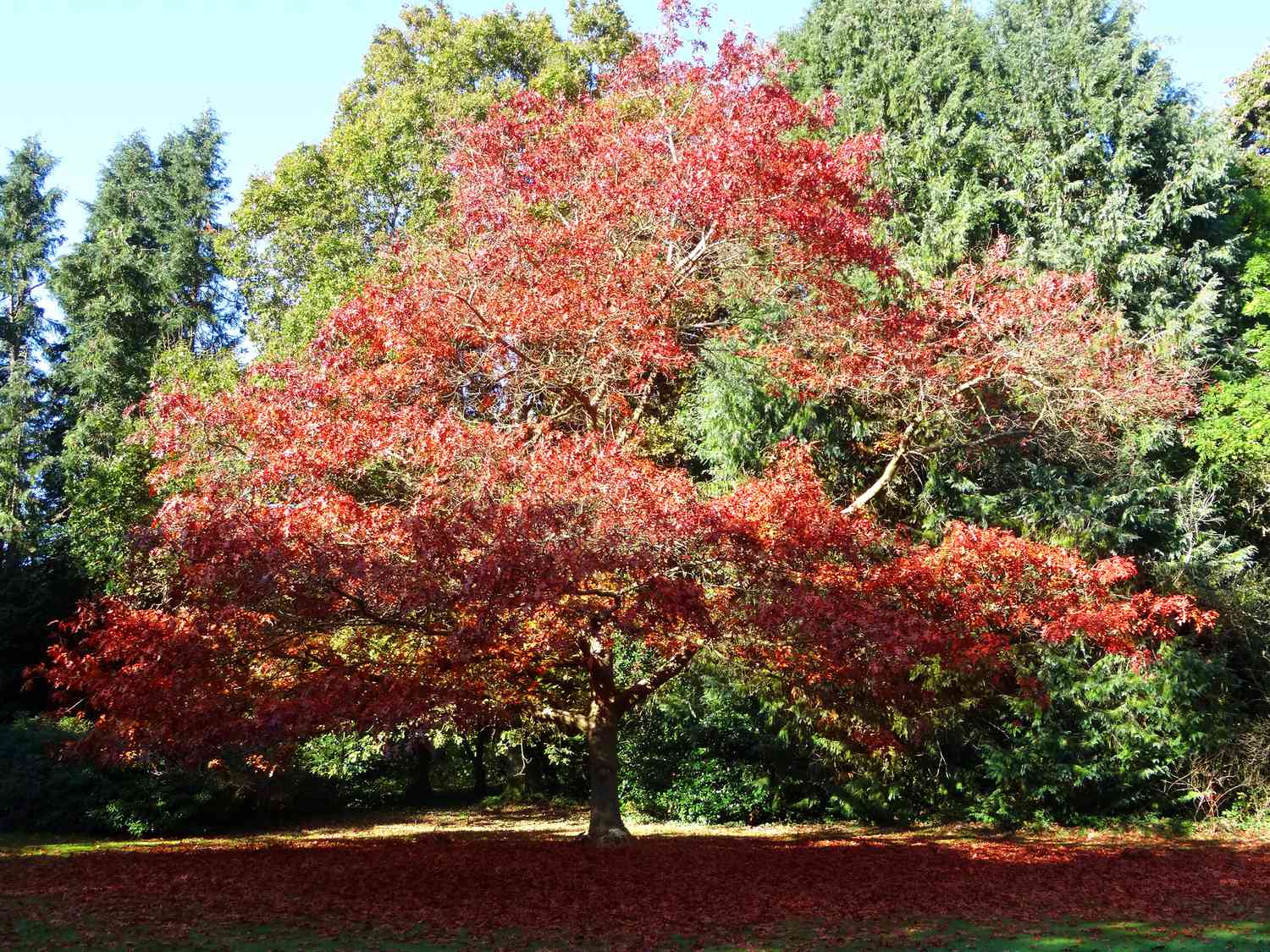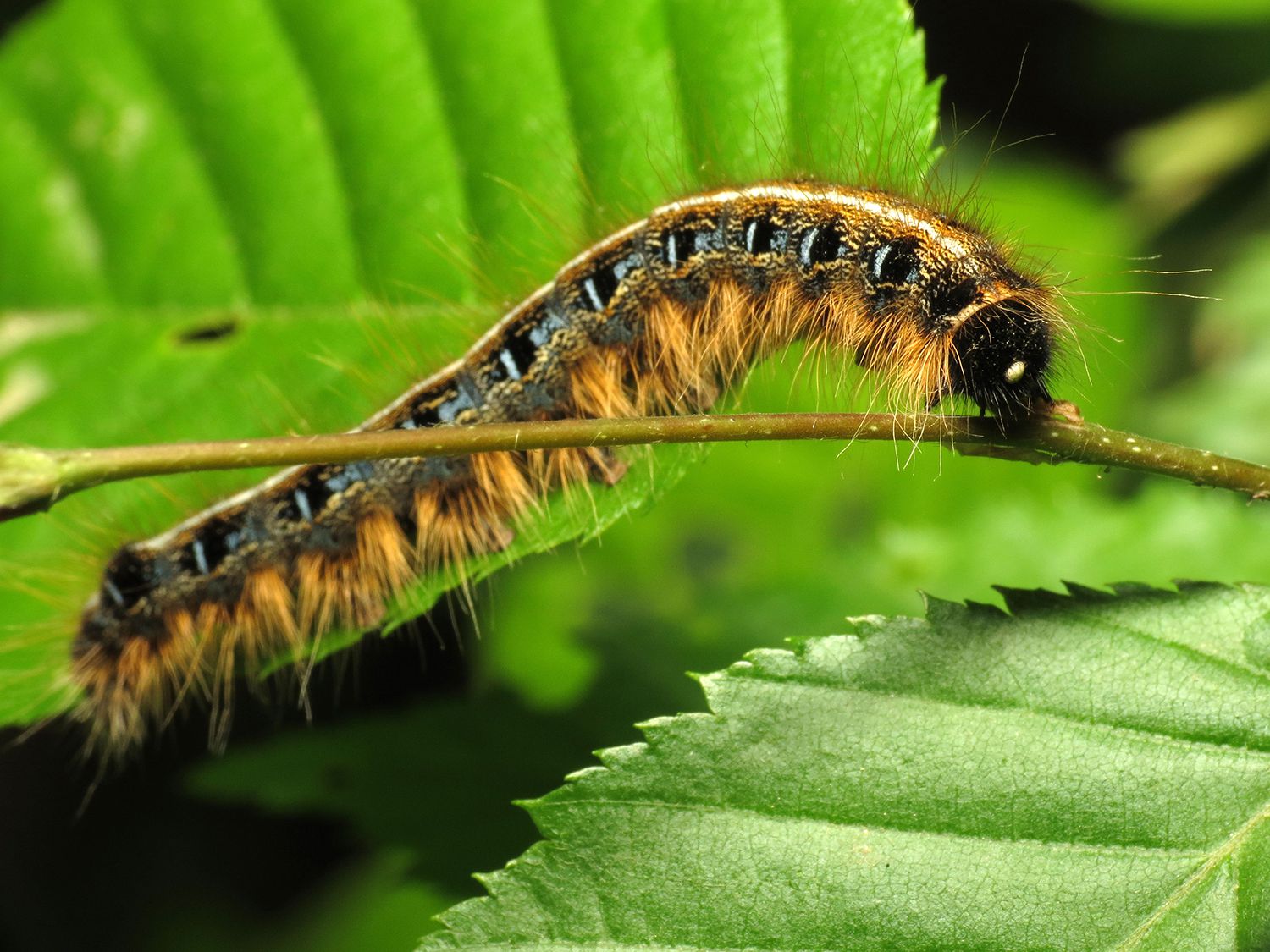Home>Gardening News and Trends>Latest News>Oak Trees Are An Example Of What Group? Ferns Bryophytes Gymnosperms Angiosperms


Latest News
Oak Trees Are An Example Of What Group? Ferns Bryophytes Gymnosperms Angiosperms
Published: November 3, 2023
Looking for the latest news on oak trees? Discover the classification group oak trees belong to, including ferns, bryophytes, gymnosperms, and angiosperms.
(Many of the links in this article redirect to a specific reviewed product. Your purchase of these products through affiliate links helps to generate commission for Chicagolandgardening.com, at no extra cost. Learn more)
Table of Contents
Ferns
Ferns are a fascinating group of plants that belong to the division Pteridophyta. They have been around for more than 360 million years and are known for their diversity and beauty. Ferns do not produce seeds like other plants, but instead reproduce through spores. They have true roots, stems, and leaves, making them unique among the non-flowering plants.
One of the distinguishing features of ferns is their characteristic fronds, which are large, divided leaves. These fronds perform photosynthesis and are responsible for the fern’s ability to thrive in shaded areas. Ferns can be found in a variety of habitats, from moist, tropical rainforests to arid, desert environments.
There are approximately 12,000 species of ferns worldwide, ranging in size from small, delicate ferns that grow on rocks or other plants to large tree ferns that can reach heights of up to 30 feet. Some common examples of ferns include the Boston fern, maidenhair fern, and staghorn fern.
Ferns are important ecologically as well. They play a crucial role in preventing soil erosion, as their extensive root systems help bind the soil together. Additionally, ferns provide shelter and habitat for a wide range of organisms, including insects, amphibians, and small mammals.
Ferns have also been used by humans for various purposes throughout history. In some cultures, ferns have symbolic meaning and are used in ceremonies and rituals. Certain species of ferns have medicinal properties and have been used in traditional medicine to treat various ailments.
In summary, ferns are a diverse and ancient group of non-flowering plants. Their unique reproductive method, beautiful fronds, and ecological significance make them a fascinating subject of study. Whether you encounter a delicate fern growing on a forest floor or a towering tree fern in a tropical rainforest, taking a moment to appreciate the beauty and importance of ferns can deepen our understanding and appreciation of the natural world.
Bryophytes
Bryophytes are a group of non-vascular plants that include mosses, liverworts, and hornworts. While they may be small in size, these plants have a significant ecological importance and can be found in various habitats around the world. Unlike other plants, bryophytes lack true roots, stems, and leaves, but they have specialized structures that enable them to survive and thrive in diverse environments.
Mosses are perhaps the most well-known type of bryophyte. They can be found in moist environments such as forests, wetlands, and even in urban areas. Mosses reproduce through spores and have a unique life cycle that alternates between a gametophyte phase, where the plant produces eggs and sperm, and a sporophyte phase, where the plant produces spores. This lifecycle contributes to the dispersal and survival of mosses in various conditions.
Liverworts and hornworts are less common but still play vital roles in their respective ecosystems. Liverworts are typically found in damp or aquatic habitats, often forming dense mats on the ground or on tree trunks. Hornworts, on the other hand, prefer moist soil and can be found in a range of environments, from forests to deserts.
Despite their small size, bryophytes provide many benefits to the environment. They help retain moisture in soil, prevent erosion, and contribute to nutrient cycling. Bryophytes also serve as habitat and food sources for various organisms, including insects, fungi, and small vertebrates. In addition, they play a vital role in carbon dioxide absorption, helping to regulate the Earth’s climate.
From a human perspective, bryophytes have been traditionally used in various ways. In some cultures, mosses have been utilized for making herbal remedies, dyes, and even as insulation material. In recent years, there has also been growing interest in using bryophytes for ecological restoration, as they can help rehabilitate degraded areas and improve water quality.
In summary, bryophytes are an important group of non-vascular plants that include mosses, liverworts, and hornworts. These small but resilient plants play crucial roles in ecosystem functioning, providing benefits such as soil retention, carbon absorption, and habitat creation. By understanding and appreciating the significance of bryophytes, we can enhance our understanding of plant diversity and the interconnectedness of all living organisms.
Gymnosperms
Gymnosperms are a group of seed-bearing plants that do not produce flowers. They have been around for millions of years and are known for their unique reproductive structures and adaptations to various environments. Gymnosperms include familiar species such as conifers, cycads, ginkgoes, and gnetophytes.
One of the defining features of gymnosperms is the presence of cones, which serve as their reproductive structures. Male cones produce pollen, while female cones contain ovules that will eventually develop into seeds. This unique reproductive strategy allows gymnosperms to disperse their seeds without the need for flowers or fruits.
Conifers, the most well-known group of gymnosperms, include trees such as pines, spruces, and firs. They are well-adapted to cold and dry environments, and their needle-like leaves help reduce water loss. Conifers are important providers of timber, pulp, and resin, and they play a significant role in ecosystems by providing habitat and shelter for various animals.
Cycads are another group of gymnosperms, characterized by their palm-like appearance and large, compound leaves. They are often found in tropical and subtropical regions, and some species have a long lifespan, with some individuals living for hundreds of years. Cycads are considered living fossils, as they have remained relatively unchanged for millions of years.
Ginkgoes are unique gymnosperms with distinct fan-shaped leaves. They are considered living fossils, as they are the only surviving species of the Ginkgoales order. Ginkgo biloba, the most well-known species, has medicinal properties and is often used in traditional medicine to improve cognitive function and circulation.
Gnetophytes are a diverse group of gymnosperms that include three genera: Ephedra, Gnetum, and Welwitschia. They have unique reproductive structures and are found in different regions around the world. Some species of gnetophytes, like Ephedra, have been used in traditional medicine for their medicinal properties.
Gymnosperms are not only important for their ecological roles but also for their economic and cultural value. Many gymnosperm species are used for timber, paper products, and medicinal purposes. They are also valued for their ornamental characteristics, such as the use of conifers in landscaping and the cultivation of cycads and ginkgoes as unique and ancient plants.
In summary, gymnosperms are a diverse group of seed-bearing plants that do not produce flowers. They have unique reproductive structures and adaptations that allow them to thrive in various environments. Gymnosperms play a crucial ecological role, provide economic resources, and serve as a living link to the ancient history of plant evolution.
Angiosperms
Angiosperms, also known as flowering plants, are the most diverse and widespread group of plants on Earth. They are characterized by the presence of flowers and fruits, which allow for efficient reproduction and seed dispersal. With over 300,000 known species, angiosperms come in a wide variety of sizes, shapes, and ecological roles.
One of the key features of angiosperms is their flowers. Flowers are complex structures that serve as the reproductive organs of the plant. They attract pollinators, such as bees, butterflies, and birds, through their colorful petals and sweet nectar. This unique adaptation allows angiosperms to achieve successful cross-pollination, resulting in genetic diversity and ensuring the survival of the species.
After successful pollination, angiosperms form fruits, which are structures that protect developing seeds. Fruits come in various shapes and sizes, and they play a crucial role in seed dispersal. Animals often eat fruits, unknowingly carrying the seeds inside their digestive system or attaching them to their fur, allowing them to be dispersed to new locations.
Angiosperms can be found in almost every ecosystem on the planet, from lush rainforests to arid deserts. They dominate terrestrial habitats and are essential for maintaining the balance of ecosystems. Angiosperms provide food, shelter, and habitat for countless organisms, from insects to mammals.
One of the most economically significant aspects of angiosperms is their use in agriculture. Many of the crops that make up our diets, such as wheat, rice, corn, and fruits, are angiosperms. Through selective breeding and domestication, humans have transformed wild angiosperms into cultivated varieties that provide us with food, fiber, and even medicinal plants.
Aside from their practical importance, angiosperms also hold cultural and aesthetic value. Flowers have been celebrated for their beauty and symbolic meanings in various cultures around the world. They are used in celebrations, ceremonies, and as gifts to express emotions and convey messages. Additionally, many people derive joy and relaxation from cultivating gardens filled with colorful and fragrant flowering plants.
In summary, angiosperms are the most diverse group of plants, characterized by their flowers and fruits. They play a vital role in the functioning of ecosystems, provide food and resources for humans, and hold cultural significance. Understanding the complexity and importance of angiosperms helps us appreciate the remarkable diversity and interconnectedness of the natural world.








